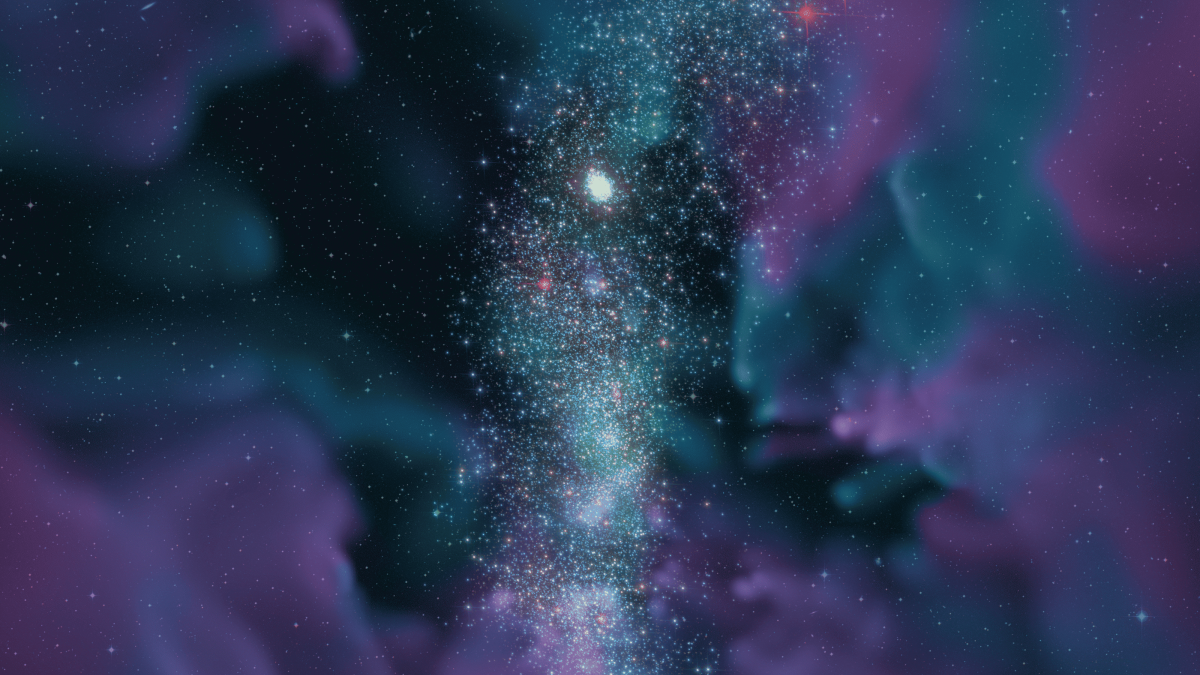Simulations solve centuries-old cosmic mystery – and discover new class of ancient star systems
For centuries, astronomers have puzzled over the origins of one of the universe’s oldest and densest stellar systems, known as globular clusters. Now, a University of Surrey-led study published in Nature has finally solved the mystery using detailed simulations – while also uncovering a new class of object that could already be in our own galaxy.

A globular cluster (white concentration of stars) naturally emerges in the high-resolution EDGE simulations. These simulations also predict the existence of a new class of object: globular cluster-like dwarfs. These new objects form similarly to globular clusters, but in their own dark matter halo. The nearby Reticulum II dwarf galaxy may be such an object that has been hiding in plain sight in our cosmic backyard. If so, it promises unprecedented constraints on the nature of dark matter and a new place to hunt for the first metal-free stars.
Globular clusters are dense collections of hundreds of thousands to millions of stars found orbiting around galaxies, including the Milky Way. Unlike galaxies, they show no evidence of dark matter, and their stars are unusually uniform in age and chemical composition – traits that have left scientists debating their formation since their discovery in the 17th century.
Surrey researchers used ultra-high-resolution simulations that can trace the Universe’s 13.8-billion-year history in unprecedented detail, allowing them to watch globular clusters form in real-time within their virtual cosmos, called EDGE. The simulations find multiple pathways for their creation and, unexpectedly, the emergence of a new class of star system – “globular cluster-like dwarfs” – that sits between globular clusters and dwarf galaxies in terms of their properties.
Working in collaboration with Durham University, the University of Bath, the University of Hertfordshire, Carnegie Observatories and the American Museum of Natural History in the USA, Lund University in Sweden and the University of Barcelona in Spain, researchers used the UK’s DiRAC National Supercomputer facility to run the EDGE simulations over several years. To put the scale into perspective, if the largest simulations were run on a standard or high-end laptop, they would take decades to complete. These simulations not only recreated realistic globular clusters and dwarf galaxies but also predicted a previously unknown class of object.
Conventional dwarf galaxies are typically dominated by dark matter, with around a thousand times more of the mysterious substance than stars and gas combined. However, the newly identified ‘globular cluster-like dwarfs’ appear similar to regular star clusters when observed, yet still contain a significant amount of dark matter – meaning telescopes may have already found them in the real universe and classified them as regular globular clusters. This small difference would place them in a unique position to study both dark matter and cluster formation.
Several known Milky Way satellites, such as the “ultra-faint” dwarf galaxy Reticulum II, are likely candidates. If confirmed, they could become prime sites for the search for pristine, metal-free stars born in the early Universe and new locations to test models for the ever-elusive “dark matter”.
The next step is to confirm the existence of these globular cluster-like dwarfs through targeted observations with telescopes, including the James Webb Space Telescope and upcoming deep spectroscopic surveys. If they do, it could give astronomers new ways to test dark matter theories and offer some of the best chances to find the Universe’s very first generation of “metal-free” stars.
###
Notes to editors
- Dr Ethan Taylor and Professor Justin Read are available for interview; please contact mediarelations@surrey.ac.uk to arrange.
- The full paper can be found at https://www.nature.com/articles/s41586-025-09494-x
- Videos from the simulations can be found at https://dirac.ac.uk/featured-project-edge-project/. For access to video files, please contact mediarelations@surrey.ac.uk
Featured Academics
Media Contacts
External Communications and PR team
Phone: +44 (0)1483 684380 / 688914 / 684378
Email: mediarelations@surrey.ac.uk
Out of hours: +44 (0)7773 479911

